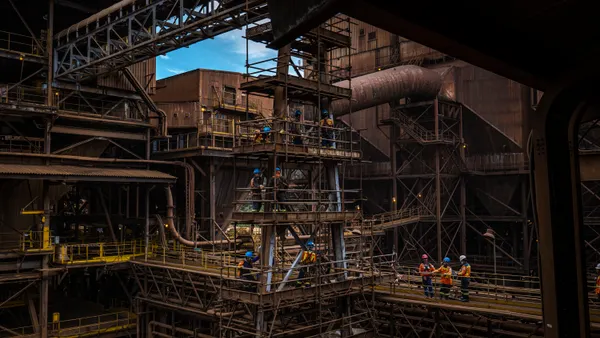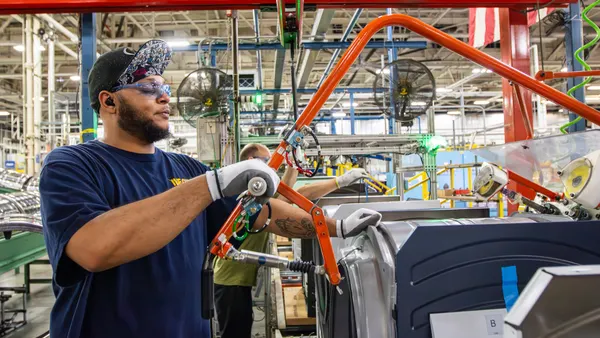Dive Brief:
- The purchasing managers index (PMI) declined from 50.9 to 50.1 in February, keeping the manufacturing sector in growth territory (a figure above 50 indicates growth and less than 50 shows contraction), according to a report from the Institute for Supply Management (ISM).
- "Overall, sentiment this month is marginally positive regarding near-term growth," Timothy Fiore, chair of ISM's Manufacturing Business Survey Committee, said in a statement. However, the report showed new orders fell and backlogs increased amid coronavirus challenges.
- Some ISM survey respondents reported production delays, longer lead times, lack of supplier visibility and difficulty sourcing parts as a result of the outbreak.
Dive Insight:
Across sectors, decreasing raw material prices were a bright spot in ISM's report. Amid softening demand, prices fell for "steel, scrap steel, aluminum, natural gas, corrugate, copper and all basic manufacturing fundamentals," according to Fiore.
In China, however, manufacturing levels hit lows not seen since January 2005, posting a PMI of 35.7% for February. The coronavirus outbreak has suspended or slowed factory operations and shipments of goods, sharply reversing the stability of the previous months, in a trend analysts and business leaders estimate could continue through the second quarter.

As a result, it is possible ISM's latest PMI isn't yet capturing the domino effects of China's manufacturing slowdown, Andrew Hunter, senior U.S. economist at Capital Economics, told Yahoo Finance.
"With the virus continuing to spread around the world and a more serious outbreak within the U.S. now looking increasingly likely, the disruption is likely to worsen over the coming weeks," Hunter said.
Some companies, such as Levi's, have already been pulling production out of China due to trade war tariffs. Levi's CEO Chip Bergh recently credited the move for mitigating the outbreak's impact on its supply chain in a panel discussion at the Retail Industry Leaders Association conference. However, he said the company is watching the outbreak's spread closely as the virus' spread to Europe threatens another one of its production and supply bases.
Apple, which maintains significant manufacturing operations and sourcing in China, has experienced concerns over delayed product for the year as the outbreak has shut down key factories in quarantined regions of the country.
To hedge against further disruptions, supply chain managers should map their supply chains and identify key or at-risk suppliers as soon as possible, according to resarch from Harvard Business Review. They can take present uncertainty as an opportunity to redesign their supply chains, identifying secondary sourcing backups or new production markets to build greater resiliency.
Identifying alternatives throughout the supply chain is key as ocean carriers blank sailings in and out of China and flights are severely curtailed, causing concerns over the industry's ability to work through increasing backlogs by the time local operations return to normal. Preparing for continued slowdowns now, could save valuable time activating alternate shipping plans once production lines begin moving, and when the next disruption strikes in the future.














